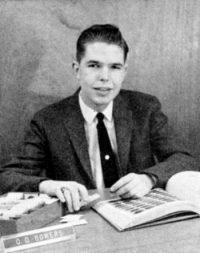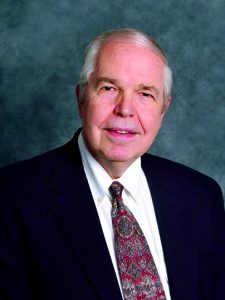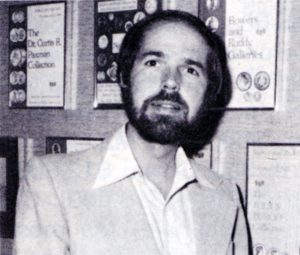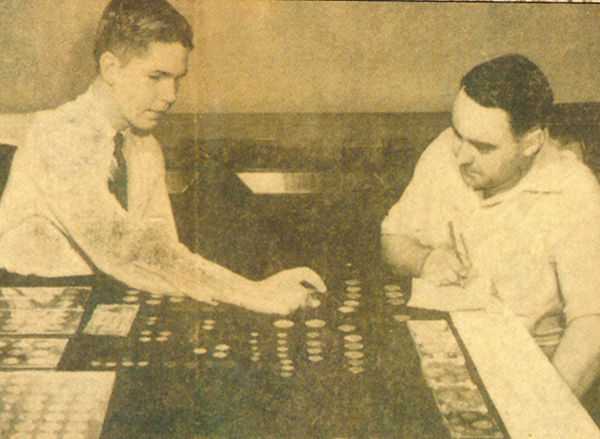
Editor’s Note: “COINage Confidential” is a new column that spotlights the movers and shakers in coin collecting and shares their insider views on the hobby.

Q. David Bowers was named by COINage in 1999 as one of the “Numismatists of the Century,” one of only six living individuals to receive this honor. He is likely to be the most prolific numismatic researcher in world history. Beginning in 1953, Bowers’ contributions to numismatics have continued uninterrupted. His dedication to the hobby and his lifelong interest in rare coins, along with his pursuit of scholarly knowledge, have made him one of the most honored and revered numismatists of all time. He has received the highest honor from the Professional Numismatists Guild (PNG), the Founders Award; and from the ANA he has received three distinguished awards: Numismatist of the Year, Farran Zerbe Memorial Award, and Hall of Fame inductee. He lectures annually at Harvard University and has appeared on “NBC Today,” as well as programs on CNN, CBS, ABC, NBC, Fox, The Discovery Channel, and The History Channel.
Bowers is the most prolific numismatic author of our generation, having produced 50 works, hundreds of auction and other catalogs, and several thousand articles, mostly written in the field of rare coins. In 2000-2003 he was central in the marketing of the gold coins and ingots from the vast treasure of the S.S. Central America and wrote the definitive book on the subject, A California Gold Rush History Featuring Treasure from the S.S. Central America.
He also serves as numismatic director of Whitman Publishing LLC, where he has produced many other books, including more than a half dozen in the popular Bowers Series. During his illustrious career, he has cataloged and sold at public auction many of the finest and most valuable and important collections ever assembled, with The D. Brent Pogue Collection, The Louis E. Eliasberg Collection, Ambassador and Mrs. R. Henry Norweb Collection, The Garrett Collection (for The Johns Hopkins University), The Harry W. Bass, Jr., Collection, and The Walter W. Childs Collection being but a short list.
What motivated you to become a coin dealer, and at what age did you start?
I became a collector at age 12 in 1952. I found that trading in coins helped build my collection. At the time, I was working at odd jobs, but coins were more interesting. I became a part-time dealer at the local club in 1953 and started going to conventions in 1954. Coins were incredibly interesting to me from a historical viewpoint.
What is your favorite area of numismatics to research?
Early American coins, tokens, medals, and paper money plus numismatic lore and history are my favorite areas of numismatics to research. I especially enjoy parts of numismatics that have not been explored in depth, as this allows for productive research.
The hobby and science of numismatics has a graying population, and very few young people are entering the field. What needs to be done to expand and grow the hobby?
This is the question for all collectibles. I have found that “to know numismatics is to love it.” It takes time, study, and patience to learn about coins and their art, history, and romance. Most emphasis in the marketplace is on buying and selling, hopes for quick profits, excitement about common coins graded at high levels, and gold and silver. All of these elements are interesting, but nearly everyone burns out quickly, never to be heard from again. The art, science, history, and romance of coins are the key to longevity. Those who embrace these factors make numismatics part of their lives.
 You know the American Numismatic Association (ANA) well from your unique perspective of having served as ANA president as well as ANA auctioneer. What is the role of the ANA, and what can it do to help expand the hobby? Do ANA politics help or hurt the hobby?
You know the American Numismatic Association (ANA) well from your unique perspective of having served as ANA president as well as ANA auctioneer. What is the role of the ANA, and what can it do to help expand the hobby? Do ANA politics help or hurt the hobby?
The ANA does many great things, including the Summer Seminar, conducting the headquarters in Colorado Springs, and the superb content of The Numismatist. I love the ANA but hope that someday it will spend time on ethics and doing all it can to enhance numismatics to promote longevity of membership. The ANA will review specific complaints but to date has done nothing to censure members who engage in exploitative and misleading marketing practices. This brings great profits for those involved, but kills the collecting spirit when buyers find that common coins graded at high levels and sold for high prices cannot be resold at anywhere near the prices paid. A plan with an emphasis on dealer ethics and protecting collectors would be a feather in the cap of anyone involved with the leadership at the ANA.
What is the future of coin shows and conventions? What makes the FUN show so perennially successful, while other shows are on the verge of obsolescence?
Coin shows will continue to decline. It is much easier to bid on or buy coins on the internet than it is to go to the airport, endure delays and security, fly on planes with few amenities, and then check into a chain hotel that is similar to 1,001 other hotels. The FUN show offers the possibility of escaping the cold of the North in January and going to Florida to see palm trees, sunshine, and perhaps even visit Disneyland. It offers the possibility of combining business with vacation.
The more that a show emphasizes programs, exhibits, and camaraderie (such as meetings of specialized societies), the better. The Ship of Gold exhibit at the 2000 ANA convention in Philadelphia was exciting and drew a record 20,000 visitors. Some “P.T. Barnum” needs to be put into show publicity.
How would a cashless world affect coin and banknote collecting?
Probably not much. Photography has not destroyed the value of art, etc. When I look at my 1652 Pine Tree shilling I do not think the less of it because silver coins are no longer in circulation, etc.
 Does the United States Mint help or hurt the rare coin marketplace?
Does the United States Mint help or hurt the rare coin marketplace?
The U.S. Mint is a dynamic force and does a lot. There are two problems:
The first is that Mint surcharges are a tax on collectors and raise issue prices. The second problem is that merchants outside of the Mint who promote modern common coins in high grades and sell them for much more than Mint prices exploits consumers.
What would be the impact on existing grading services and the market if the U.S. Mint were to offer an option to buy the coins it sells certified with grades assigned by skilled Mint graders?
It would be unrealistic for the U.S. Mint to offer an option to buy the coins it sells certified with grades assigned by skilled Mint graders. The Mint is not a dealer in old coins, nor is it a grading service.
Want to receive COINage magazine in your mailbox or inbox? Subscribe today!


















